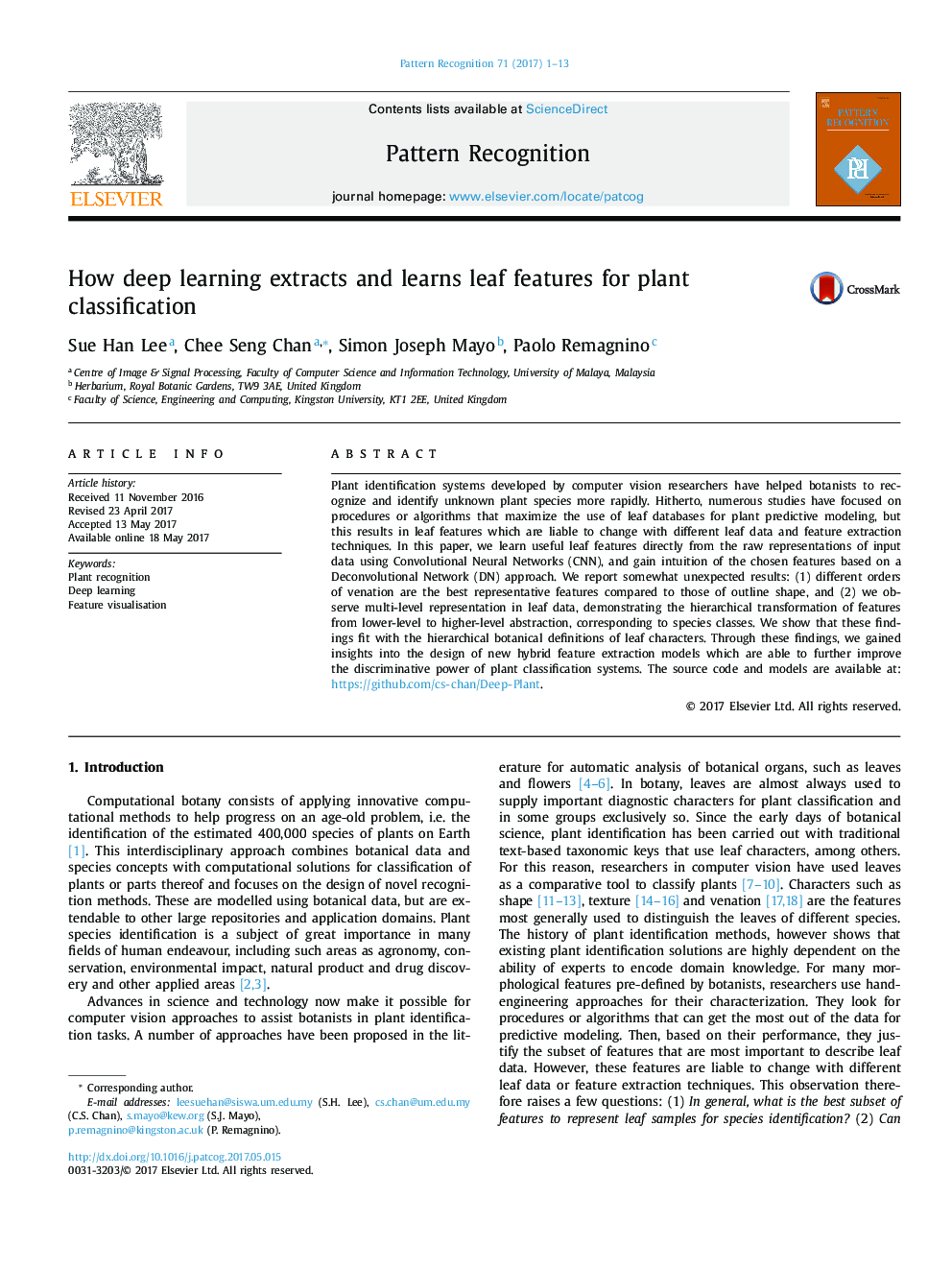| Article ID | Journal | Published Year | Pages | File Type |
|---|---|---|---|---|
| 4969536 | Pattern Recognition | 2017 | 13 Pages |
Abstract
Plant identification systems developed by computer vision researchers have helped botanists to recognize and identify unknown plant species more rapidly. Hitherto, numerous studies have focused on procedures or algorithms that maximize the use of leaf databases for plant predictive modeling, but this results in leaf features which are liable to change with different leaf data and feature extraction techniques. In this paper, we learn useful leaf features directly from the raw representations of input data using Convolutional Neural Networks (CNN), and gain intuition of the chosen features based on a Deconvolutional Network (DN) approach. We report somewhat unexpected results: (1) different orders of venation are the best representative features compared to those of outline shape, and (2) we observe multi-level representation in leaf data, demonstrating the hierarchical transformation of features from lower-level to higher-level abstraction, corresponding to species classes. We show that these findings fit with the hierarchical botanical definitions of leaf characters. Through these findings, we gained insights into the design of new hybrid feature extraction models which are able to further improve the discriminative power of plant classification systems. The source code and models are available at: https://github.com/cs-chan/Deep-Plant.
Keywords
Related Topics
Physical Sciences and Engineering
Computer Science
Computer Vision and Pattern Recognition
Authors
Sue Han Lee, Chee Seng Chan, Simon Joseph Mayo, Paolo Remagnino,
